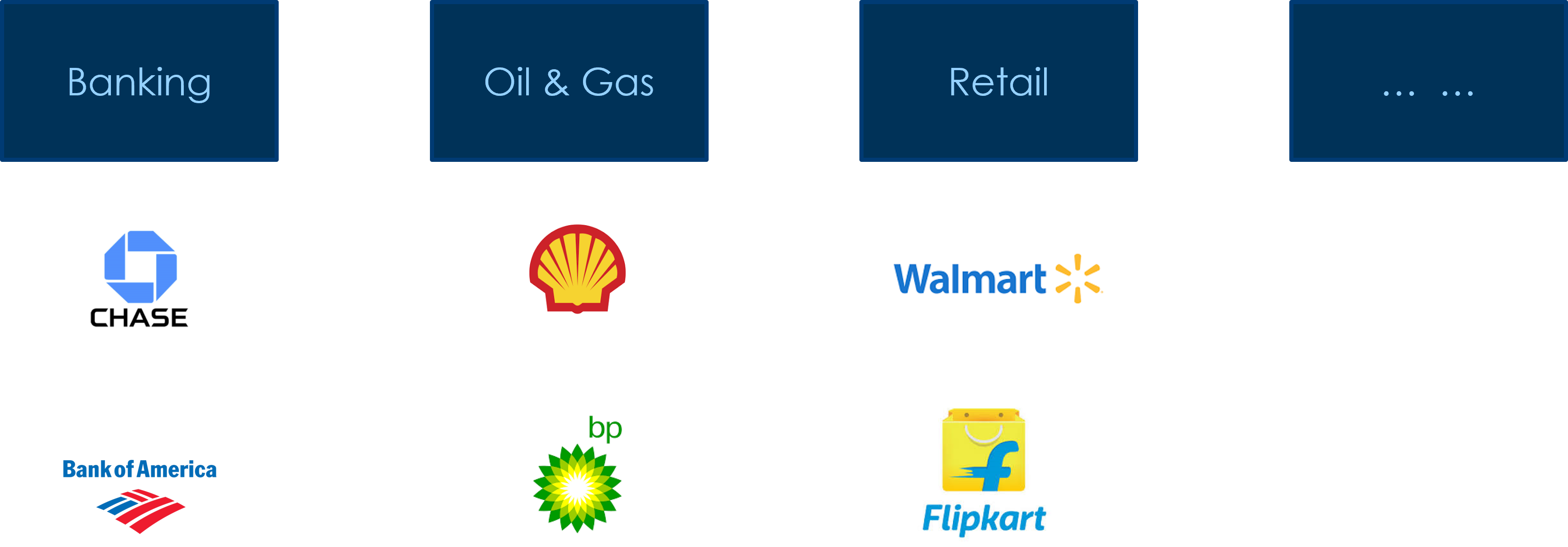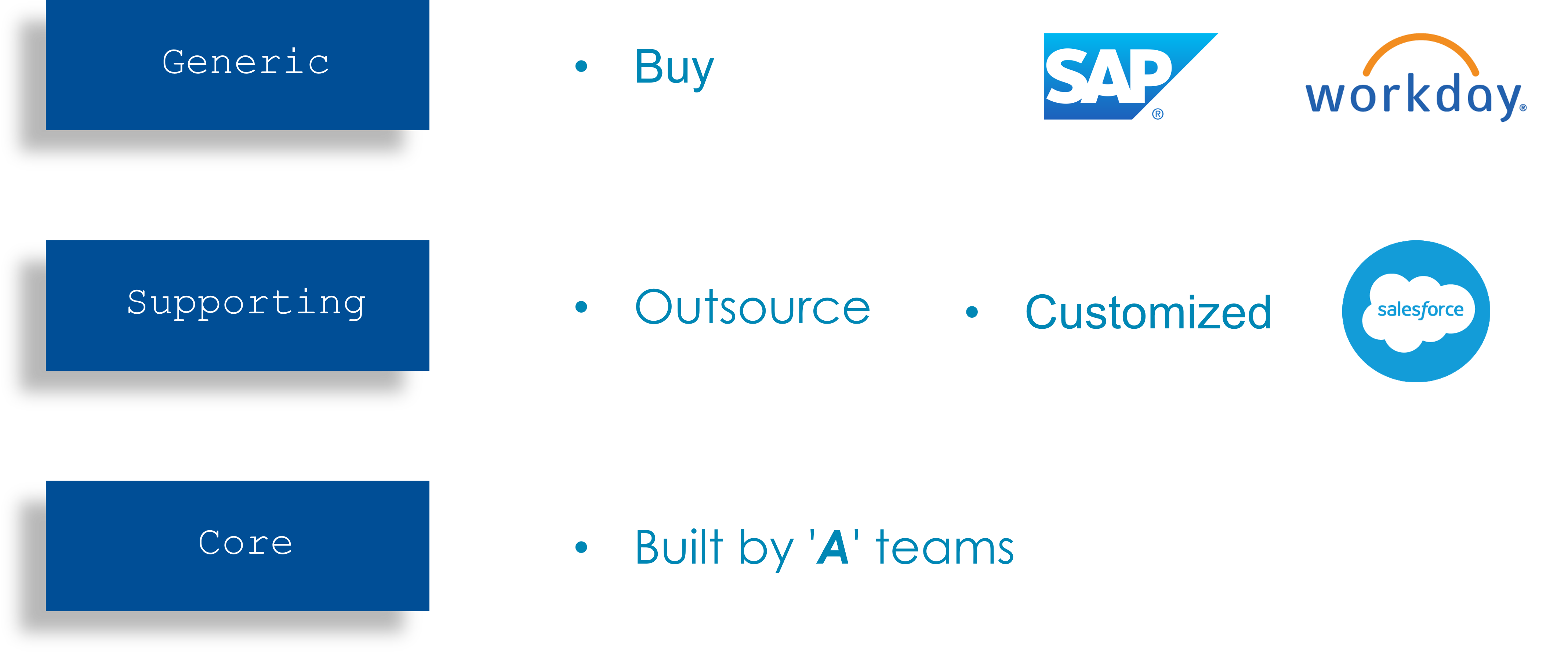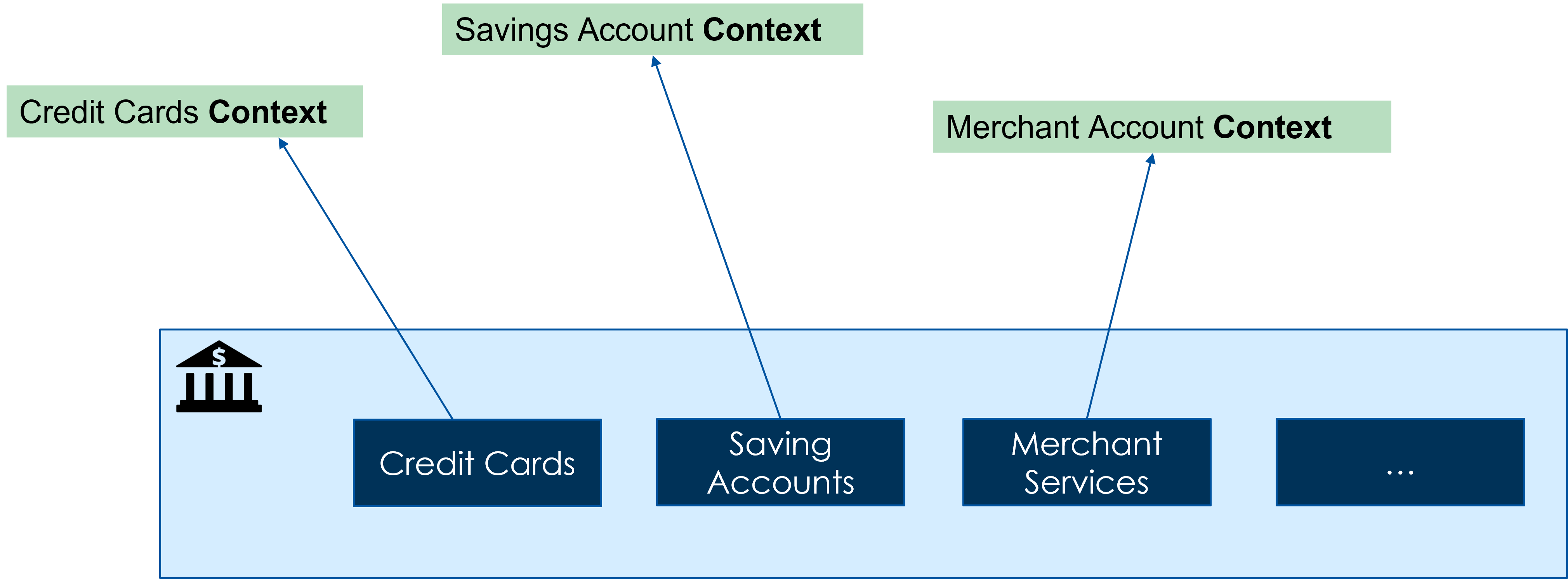Business domain
Domain
Domain = A sphere of knowledge, influence, or activity
Domain = A field or industry in which the business operate

Domain = Represents a problem space from software perspective

Sub-domains
Each business Domain is composed of Sub-Domains. In an organization there are multiple Subject Matter Experts (SME) that hold intimate knowledge of one or more sub-domains. For example in a banking domain, there are SME’s on retail banking, loan products, credit cards etc.

Business may not operate in all sub domains in that overarching domain (industry). It depends on the focus of the business.

Sub-domain categories
Sub-domains are categorized into 3 types based on their complexity & business value:
-
Core - This is the Differentiator for the business. Core sub-domains give a competitive edge to the business. E.g., Walmart’s supply chain
-
Supporting - Does not provide business a competitive advantage but core depends on it!! E.g., Amazon’s customer support
-
Generic - Known solutions exist for such subdomains. E.g., Human Resource functions in an enterprise
Here is a decision flow on assigning a type to the sub-domain.

Why do we categorize the sub-domains?
Understanding of sub domain types help with the decision making process on to which domain resources should be allocated.
- Limited Resource; drives prioritization
- Return on Investments
- Build Vs. Buy decisions
Here are examples of action taken based on domain category:

Context
The circumstances or facts that form the setting for a statement, event or idea
For understanding the Business Domain, it is a MUST that IT teams understand the business context
Refer to the illustration below - you are told that a “Customer deposited to the account”. This action has a different meaning in the context of different types of accounts.
-
Credit card - means that customer paid the credit card bill
-
Saving account - means that customer deposited money that will be available for withdrawal
-
Merchant account - it may mean that customer paid some form of merchant fee
For this reason one MUST understand the Context to understand the business domain.

Understanding the domain
To understand a Domain and IT expert must understand the:
- Business context
- Business language